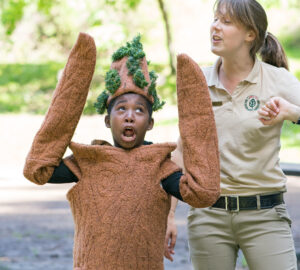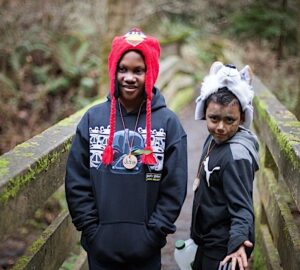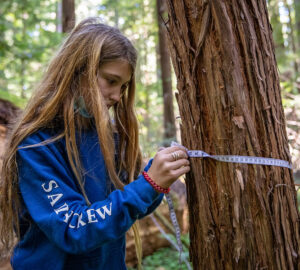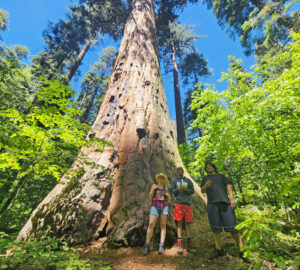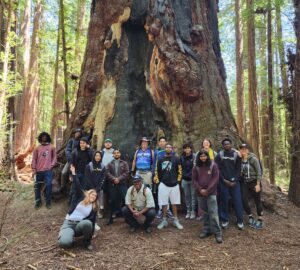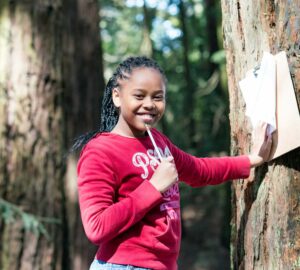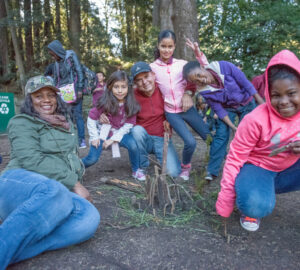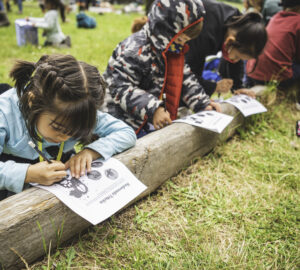Materials round out broad spectrum of resources for home and classroom
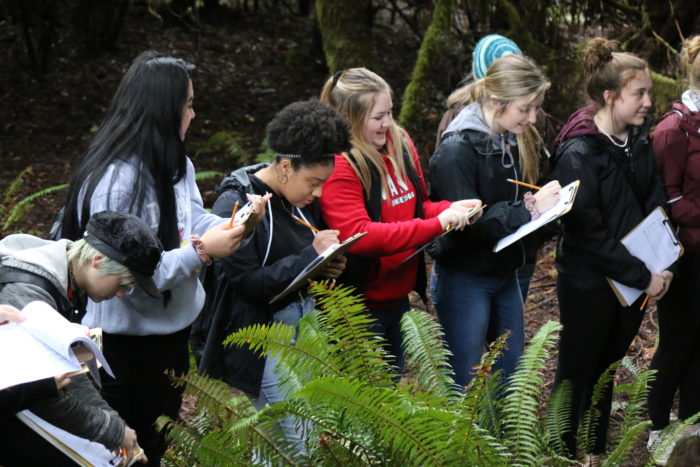
When I first started at Save the Redwoods League, it was my vision to create redwoods lessons and activities that teachers could use that was cross-disciplinary. So if you were a student, you would learn about redwoods through art, math, language arts, reading, and science. You would become immersed in redwoods and eventually find yourself in a redwood forest, connecting to it in your own way. When I brought this up to a teacher friend of mine, she loved the idea but said it takes a lot of time and experience to create a unit like that. So I took it upon myself to create this redwood unit for teachers.
For the past few years, the League has been working closely with teachers in Humboldt County to create comprehensive K-12 redwood curriculum. The hope is that students will learn about and explore the redwoods multiple times throughout their educational careers, creating a deeper sense of place and connection to forests that might be in their backyards.
Through these lessons, students will learn about the parts of a redwood tree by acting out the tree parts’ functions, which incorporates movement into learning. They can explore maps, learning about California geography. And we incorporate real scientific datasets into the lessons, so students see the actual height, width, and volume of some of the tallest trees in the world. They can discover the hidden world of redwoods through microscopes and read about why redwoods thrive and survive where they do. These are just a few examples of activities that are part of the unit.
We hope that teachers and other educators far and wide will use this curriculum to engage their students in science and make learning fun. All the lessons are standards-based and FREE. Some are adapted to virtual learning as well. Please feel free to share the curriculum with educators and organizations. The League is working with various counties to incorporate the curriculum into their schools over the next few years. We are also working closely with California State Parks to tie in our curriculum with their PORTS program.
The mission of Save the Redwoods League has three main pillars – protect, restore, and connect – and they are all important. The connect mission is particularly important, as we believe that sharing these wondrous experiences is a vital element in the protection of coast redwood and giant sequoia forests. Education is an important aspect of building this connection between people and the redwoods, and our education program seeks to connect new generations of caretakers to redwood forests by helping them understand the cultural and natural history of these magical places.
In addition to this new curriculum, the League created materials for online use. In partnership with East Bay Regional Park District, we took our Explore Your Watershed Elementary School Program and turned the lessons and field trip activities into online resources. These lessons focus on watersheds and redwood forests. A teacher’s guide and a student journal complement the lessons This is really a treasure trove of material that can be used at home and in the classroom.
As with any good curriculum, we will change it as our planet changes. This year we hope to add fire lessons to the unit andvideos about careers in the redwoods. We also plan to work with our tribal partners to make sure their stories are told and are incorporated into the units.
If you have any questions about the curriculum or our education program, please reach out to our Education and Interpretation Manager at education@savetheredwoods.org
This project was partially funded by the S.H. Cowell Foundation.

